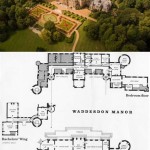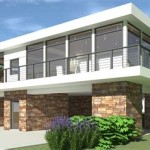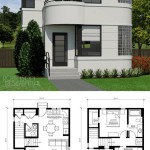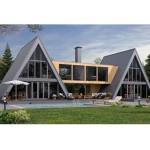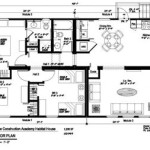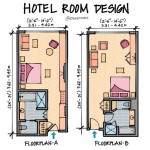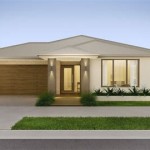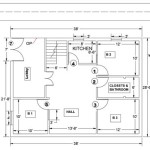How To Choose House Plans With a Garage On The Sides
Selecting a house plan that incorporates a side-entry garage requires careful consideration of numerous factors. This architectural choice can significantly impact curb appeal, functionality, and the overall usability of the property. Understanding the nuances of these plans and the elements that contribute to their effectiveness is crucial for homeowners embarking on the design or construction process.
The placement of a garage on the side of a house, rather than the front, offers several advantages. It can enhance the aesthetic appeal of the home by minimizing the visual impact of the garage door. Side-entry garages frequently create more expansive front yards and allow for more prominent architectural features on the facade of the house. Moreover, this design can improve traffic flow around the property and create more private outdoor spaces.
However, successful implementation requires careful planning and attention to detail. Aspects such as lot size and shape, local zoning regulations, the home's architectural style, and the homeowner's specific needs must be thoroughly evaluated. This article details several key considerations involved in choosing house plans with side-entry garages, ensuring the resulting design is both functional and visually appealing.
Understanding Lot Characteristics and Zoning Regulations
The physical characteristics of the lot are paramount in determining the feasibility of a side-entry garage. Lot width, depth, and topography all play a significant role. A narrow lot might make it difficult or impossible to accommodate a side-entry garage while maintaining adequate setbacks and usable yard space. Conversely, a deep lot might provide ample room for a side-entry garage, but it could also increase the driveway length and overall construction costs.
Topography is another critical consideration. A sloping lot might require extensive grading and retaining walls to create a level surface for the garage and driveway. This could significantly increase construction costs and potentially impact drainage patterns on the property. Careful consideration of the lot's natural contours is essential to minimize these challenges.
Local zoning regulations also have a significant impact on the design and placement of a side-entry garage. These regulations often dictate minimum setback requirements from property lines, maximum building heights, and restrictions on the percentage of lot coverage. It is crucial to thoroughly research local zoning ordinances before selecting a house plan to ensure compliance. Failure to adhere to zoning regulations can result in costly delays and modifications during the construction process. Sometimes, variances can be requested, but they are not guaranteed and require a specific justification.
Furthermore, some municipalities have specific requirements regarding the visibility of garage doors from the street. These regulations might restrict the placement of side-entry garages in certain locations or require that they be screened with landscaping. Understanding these requirements is essential to avoid potential conflicts and ensure a smooth permitting process.
Beyond the basic setback and coverage restrictions, consider easements that might run across the property. Easements grant specific rights to other entities to use portions of the land, such as utilities with underground cables or the municipality for drainage. These areas cannot have permanent structures built on them, limiting the buildable area. Before purchasing or designing, a land survey should be conducted to ensure all property lines, easements, and other physical constraints are known.
Matching Architectural Style and Enhancing Curb Appeal
The architectural style of the house should be carefully considered when choosing a house plan with a side-entry garage. The design of the garage should complement the overall aesthetic of the home, creating a cohesive and harmonious appearance. A side-entry garage should not appear as an afterthought but should be seamlessly integrated into the overall design. The materials, colors, and architectural details of the garage should match those of the main house.
For example, a traditional-style home might benefit from a garage with a gable roof, traditional carriage-style doors, and decorative trim. A modern-style home, on the other hand, might feature a garage with a flat roof, minimalist design, and sleek, contemporary doors. The key is to create a visual connection between the garage and the main house, ensuring that they appear as a unified architectural statement.
Curb appeal is another critical consideration. A side-entry garage can significantly enhance the curb appeal of a home by minimizing the visual impact of the garage door and creating a more spacious front yard. This allows for more prominent architectural features on the facade of the house, such as a grand entryway, large windows, or decorative landscaping. The design of the driveway leading to the side-entry garage should also be carefully considered. A curved driveway or a driveway with decorative paving can add visual interest and enhance the overall aesthetic appeal of the property.
Consider the landscaping around the garage. Planting trees, shrubs, and flowers can soften the appearance of the garage and help it blend seamlessly into the surroundings. A well-landscaped garage can enhance the curb appeal of the home and create a more inviting and welcoming atmosphere. The landscaping should complement the architectural style of the home and the surrounding neighborhood.
Finally, the garage door itself should be chosen with care. Garage doors are available in a wide variety of styles, materials, and colors. Choosing a garage door that complements the architectural style of the home and enhances its curb appeal is essential. Consider factors such as insulation, durability, and security when selecting a garage door. The hardware, such as handles and hinges, should also be chosen to match the overall aesthetic of the home.
Optimizing Functionality and Internal Layout
The functionality of the garage is as important as its aesthetic appeal. The size of the garage should be adequate to accommodate the homeowner's vehicles and storage needs. Consider the number of cars that will be parked in the garage, as well as any additional storage requirements for tools, equipment, or recreational items. It is generally advisable to err on the side of caution and choose a garage that is slightly larger than initially anticipated. This will provide flexibility for future needs and prevent the garage from feeling cramped or cluttered.
The internal layout of the garage should also be carefully considered. A well-designed garage will include ample storage space, adequate lighting, and convenient access to the house. Consider incorporating built-in shelving, cabinets, or workbenches to maximize storage space and create a functional workspace. Adequate lighting is essential for safety and convenience, especially during nighttime hours. Consider installing multiple light fixtures to ensure that the garage is well-lit throughout.
The connection between the garage and the main house is another critical consideration. A direct entry from the garage into the house can provide convenience and security, especially during inclement weather. This entry should ideally lead into a mudroom or laundry room to prevent dirt and debris from being tracked into the main living areas. The placement of this entry should also be carefully considered to ensure that it does not disrupt the flow of traffic within the house.
Think about the driveway layout leading to the garage. A long, straight driveway can be visually unappealing and difficult to navigate. Consider incorporating curves or landscaping to break up the monotony and create a more visually interesting entry. Adequate parking space should also be provided in front of the garage to allow for easy maneuvering of vehicles. The driveway material should be durable and easy to maintain. Concrete, asphalt, and pavers are all popular choices.
Finally, consider the potential for future modifications or additions to the garage. If there is a possibility that the garage will need to be expanded in the future, it is advisable to plan for this during the initial design phase. This might involve ensuring that the garage is located in a suitable location on the property and that the foundation is strong enough to support future additions. Adding electrical outlets and proper insulation for potential future use as a workshop or hobby area is also beneficial.

L Shaped House Plans With Side Garages Blog Eplans Com

House Plans With Rear Entry Garages

Best Corner Lot House Plans Floor With Side Entry Garage

L Shaped House Plans With Side Garages Blog Eplans Com

The Benefits Of House Plans With Side Entry Garage Truoba

House Plans With Side Entry Garages Rear Garage The Designers

One Story Ranch House Plan With Side Entry Garage

Open Concept Home With Side Load Garage 89912ah Architectural Designs House Plans

House Plans With Side Entry Garages Rear Garage The Designers

The Benefits Of House Plans With Side Entry Garage Truoba
Related Posts

